There is huge interest in geopolitics from senior decision-makers recently. So how do you capitalise on this opportunity to engage your C-Suite? Cvete Koneska, Head of Advisory at Dragonfly, outlines a three-step process.
Geopolitical and security concerns have become a top priority for business leaders. Although an existing trend, this was crystallised during the security crisis in Ukraine and subsequent economic sanctions on Russia. Boards and senior decision-makers were compelled to respond quickly, making the need for clear, strategic insight on security and politics obvious.
For security and risk teams, this is a chance to expand your role beyond keeping people, assets and data safe and secure. By engaging with the board and shaping the future of your organisation, you can pave the way for a broader function and offer greater value.
But engaging with the board can be very different from the usual, daily interactions of the security team. So how do you make the most of this opportunity?
Swap tactical for strategic thinking
While most risk and security teams are immersed in tactical information and granular details about specific incidents, the board’s focus is almost entirely strategic. They’re interested in insights and trends which help them determine the future direction of the company, steer the organisation away from crises and protect its reputation, brand and operations.
Getting and maintaining the board’s attention requires a mindset shift. You need to understand their priorities and worries and provide information that speaks directly to them.
This can be quite different to the tactical information and planning you need to keep people and assets secure, and do your job successfully.
For example, in order to prioritise the security resources and measures that you apply across the business, you need to keep track of security incidents in different locations. But this won’t give the board the insights they need to make decisions about the future of the company.
They’re more likely to be interested in the underlying political and social shifts that are driving changes in the security environment, and their implications. To provide valuable input, you’d need to offer a strategic analysis of the risk drivers and forecast the future risk trajectory.
Understand your board’s priorities
Next, clarify your board’s specific challenges.
Tap into internal resources. Your team already has extensive knowledge of the security and operational challenges the business is facing. You are tuned into the challenges of the employees and the operational obstacles in the most remote locations in a way that the board can never be.
Use this information to inform your thinking about the broader business implications of the security and political trends you see.
Look for other evidence of corporate strategy. What decisions is the board already making? Where does the business want to be in two years’ time?
Get external input, too. Experts on strategic intelligence and risk can give you an independent perspective on the geopolitical and security landscape in which your organisation operates. Reach out to them!
Brief your board members on issues that resonate with them
Now you have a clear picture of your board’s priorities, you can leverage intelligence to keep the attention of senior decision-makers, including the C-Suite.
The board meets regularly to consider issues of strategic importance to the future of the company and offer oversight of the company’s leadership and operations. They will receive a pack of documents to consider in advance.
This is your chance to provide them with a tailored brief on security issues which speaks directly to their interests.
A typical report might track certain indicators for risk which the board has highlighted as a priority, and offer forward-looking intelligence.
The board will also want your input on the security implications of one-off crises. They’ll need to understand the risks when they consider new opportunities such as entering a new market.
Finally, there will be opportunities for you to deliver one-off reports exploring security issues which might threaten the company’s ability to operate safely, profitably and ethically. These could range from regulatory changes to disruptions to your supply chains, protests affecting your assets and reputation and so on.
How Dragonfly’s Advisory team helps you gain the attention of the board
You don’t have to go through this process alone. Dragonfly can help your risk and security team deliver bespoke intelligence briefs that engage the board and other senior decision-makers and offer them immense value.
First, we work with you to understand your board’s strategic concerns. If you’re a SIAS client, we already have some understanding of their priorities, and we’ll be able to offer insights into the challenges of your sector and company profile as well.
We’ll also help you think on a strategic rather than an operational level, working out the strategic implications of a range of risks from geopolitics and cybersecurity to sectoral and country-specific issues.
Together, we focus your message so it resonates with the board.
Next, we select the topics, geographies and risks that are most relevant to your organisation and map out the reports you’re going to deliver.
Examples of reports we’ve worked on recently include Chinese industrial espionage, the prospects for nationalisation of natural resources in Chile and the changing political environment in Bolivia. (Click here to see examples.)
To deliver these reports, we leverage the insights of our in-house team of expert analysts, as well as on-the-ground research, micro-polling, benchmarking, data insights, the deep and dark web and more.
Dragonfly’s bespoke briefings are:
- Forward-looking and anticipatory. We look at how the trends we analyse might develop but focus particularly on the implications for your business.
- Highly analytical. They offer in-depth, granular analysis of the issues which most concern your company.
- Designed to answer your specific questions, in cooperation with your senior decision-makers.
- Ready to deliver straight to the board. No additional work is required on your part.
As a result, they frequently become essential to our clients’ operations.
To find out more, click here now to speak to our Advisory team.
Case study: Monthly strategic intelligence updates to the board
For example, when the war in Ukraine started, a client approached our Advisory team to assist them with developing scenarios for the likely conflict trajectory with a three-, six- and 12-month outlook.
Our contact, who sits with the risk function in the client organisation, was asked to present these to the board to inform their conversations about the impact of the Russia-Ukraine war.
We developed three scenarios, bespoke to the client’s needs, focusing on the likely impacts on their operations and people across Europe and Asia, outlining the key indicators to monitor for each scenario.
As a result, the board requested a regular risk update for their meetings, covering topics of strategic importance. We now provide monthly strategic intelligence updates to them, covering issues such as China’s zero-covid policy, a left-wing shift in Latin America, and social justice protests in the US.
The insights have resulted in serious operational decisions. Recently, after reading one of Dragonfly’s bespoke reports, the company decided to withdraw from one of its key markets.
<h3Keep the strategic focus and stay involved
This ongoing interaction with the board is critical.
Some business leaders see the conflict between Russia and Ukraine as a one-off crisis. But boards will remain interested in geopolitics and security long-term. Once they have recognised the value of considered, strategic risk analysis they are unlikely to discard it for future decision-making.
With growing tensions between the West and Russia and China, regional conflicts reigniting in the Middle East, and political instability deteriorating over the global economic downturn, there will be a lot for business leaders to consider over the coming months.
They will be keen to remain abreast of ongoing and emerging trends and challenges and will need your input and expertise.
Don’t miss out on this opportunity to raise your profile as the security and risk function, and provide maximum support to your organisation, all the way from the board to employees who rely on you for a safe and secure work environment.
Insight on security and geopolitical developments is essential for the board to design a strategy that will help the organisation thrive in uncertain and challenging times.
To find out more about how we can help you create bespoke, strategic intelligence reports for your board, get in touch with our Advisory team today.
Cvete Koneska is head of Advisory at Dragonfly. She works alongside risk, security and leadership teams to equip them with the necessary data, analysis and intelligence to make difficult decisions.




